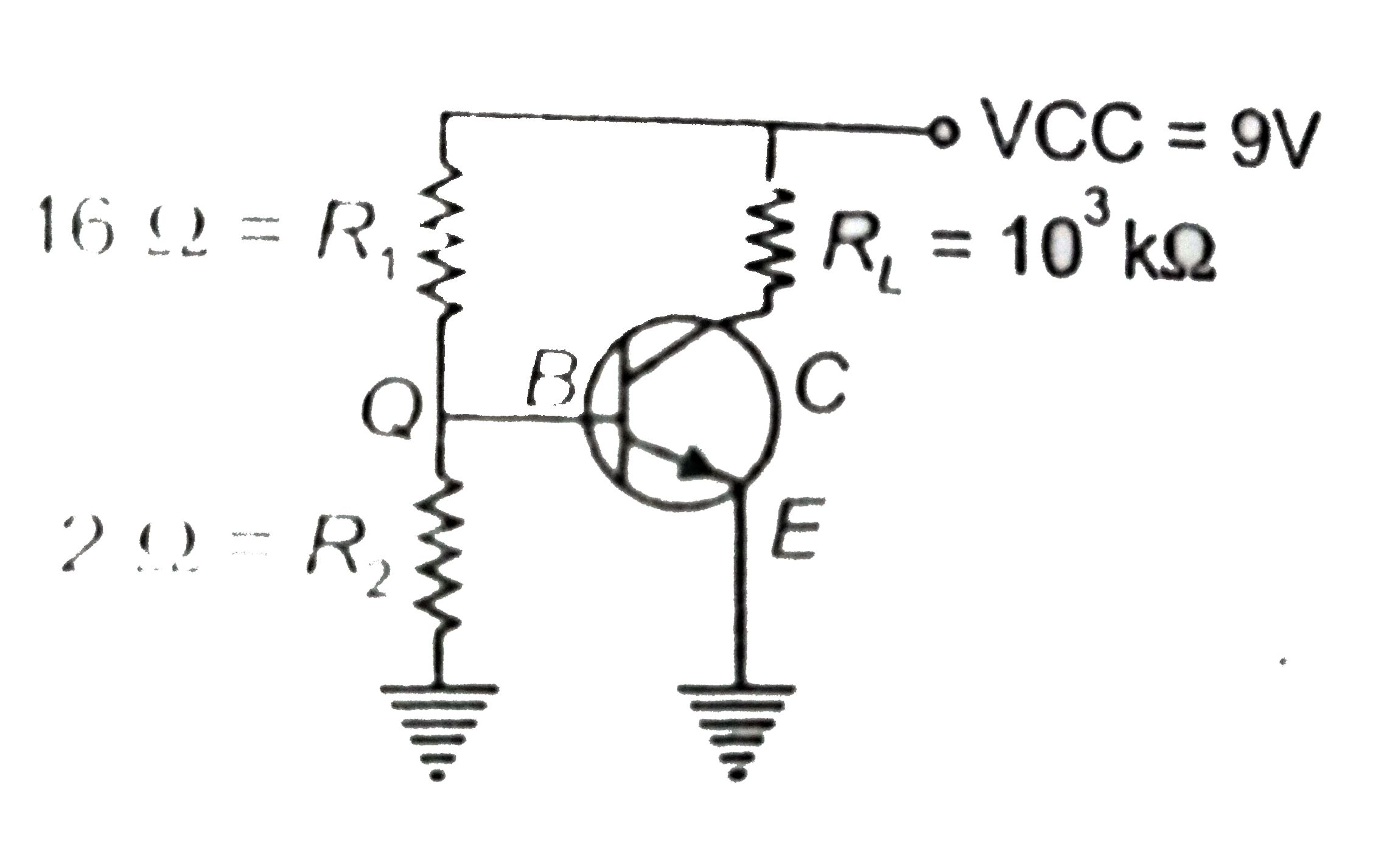In a normal operation of a transistor,
(i) base-emitter junction is forward-biased
(ii) base-collector junction is forward-biased
(iii) base-emitter junction is reverse-baised
(iv) base-collector junction is reverse-biased
(a), (b)
(b), (c )
(c ), (d)
(d), (a)
The correct Answer is:B
To solve the question regarding the normal operation of a transistor, we need to analyze the biasing of the junctions in a typical NPN transistor configuration.
1. Understanding the Transistor Structure:
- A transistor consists of three regions: the emitter (E), base (B), and collector (C). In an NPN transistor, the emitter is n-type, the base is p-type, and the collector is n-type.
2. Analyzing the Base-Emitter Junction:
- The base-emitter junction is formed between the p-type base and the n-type emitter. For normal operation, this junction must be forward-biased.
- This means that the n-type emitter is connected to the negative terminal of the power supply, and the p-type base is connected to the positive terminal. This allows current to flow from the emitter to the base.
3. Analyzing the Base-Collector Junction:
- The base-collector junction is formed between the p-type base and the n-type collector. For normal operation, this junction must be reverse-biased.
- In this case, the n-type collector is connected to the positive terminal of the power supply, and the p-type base is connected to the negative terminal. This prevents current from flowing from the collector to the base.
4. Conclusion:
- Based on the analysis:
- The base-emitter junction is forward-biased (correct).
- The base-collector junction is reverse-biased (correct).
- Therefore, the correct options are:
- (i) Base-emitter junction is forward-biased.
- (iv) Base-collector junction is reverse-biased.
Final Answer:
The correct options are (i) and (iv).
---
- A transistor consists of three regions: the emitter (E), base (B), and collector (C). In an NPN transistor, the emitter is n-type, the base is p-type, and the collector is n-type.
- The base-emitter junction is formed between the p-type base and the n-type emitter. For normal operation, this junction must be forward-biased.
- This means that the n-type emitter is connected to the negative terminal of the power supply, and the p-type base is connected to the positive terminal. This allows current to flow from the emitter to the base.
- The base-collector junction is formed between the p-type base and the n-type collector. For normal operation, this junction must be reverse-biased.
- In this case, the n-type collector is connected to the positive terminal of the power supply, and the p-type base is connected to the negative terminal. This prevents current from flowing from the collector to the base.
- Based on the analysis:
- The base-emitter junction is forward-biased (correct).
- The base-collector junction is reverse-biased (correct).
- Therefore, the correct options are:
- (i) Base-emitter junction is forward-biased.
- (iv) Base-collector junction is reverse-biased.
The correct options are (i) and (iv).
Similar Questions
A p−n junction diode is reverse biased. Then
View SolutionWhen p−n junction diode is forward biased then
View SolutionWhen p−n junction diode is forward biased then
View SolutionConsider an n-p-n transistor with its base - emitter junction forward biased and collector base junction reverse biased . Which of the following statements are true?
View Solutionp-n junction is called as forward biased when
View SolutionFor making p-n junction diode forward biased:
View SolutionA transistor is used in common emitter mode as an amplifier. Then
(1) the base-emitter junction is forward biased
(2) the base emitter junction is reverse biased
(3) the input signal is connected in series with the voltage applied to the base-emitter junction.
(4) the input signal is connected in series with the voltage applied to the base collector junction.
View SolutionConsider an n-p-n transistor with its base - emitter junction forward biased and collector base junction reverse biased . Which of the following statements are true? a) electrons crossover from emitter to collector. b) Holes move from base to collector c) Electrons move from emitter to base d) Electrons from emitter move out of base without going to the collector
View SolutionIn the given circuit , the voltage across the base emitter junction is

View SolutionThe reason of current flow in P−N junction forward biase is
View Solution